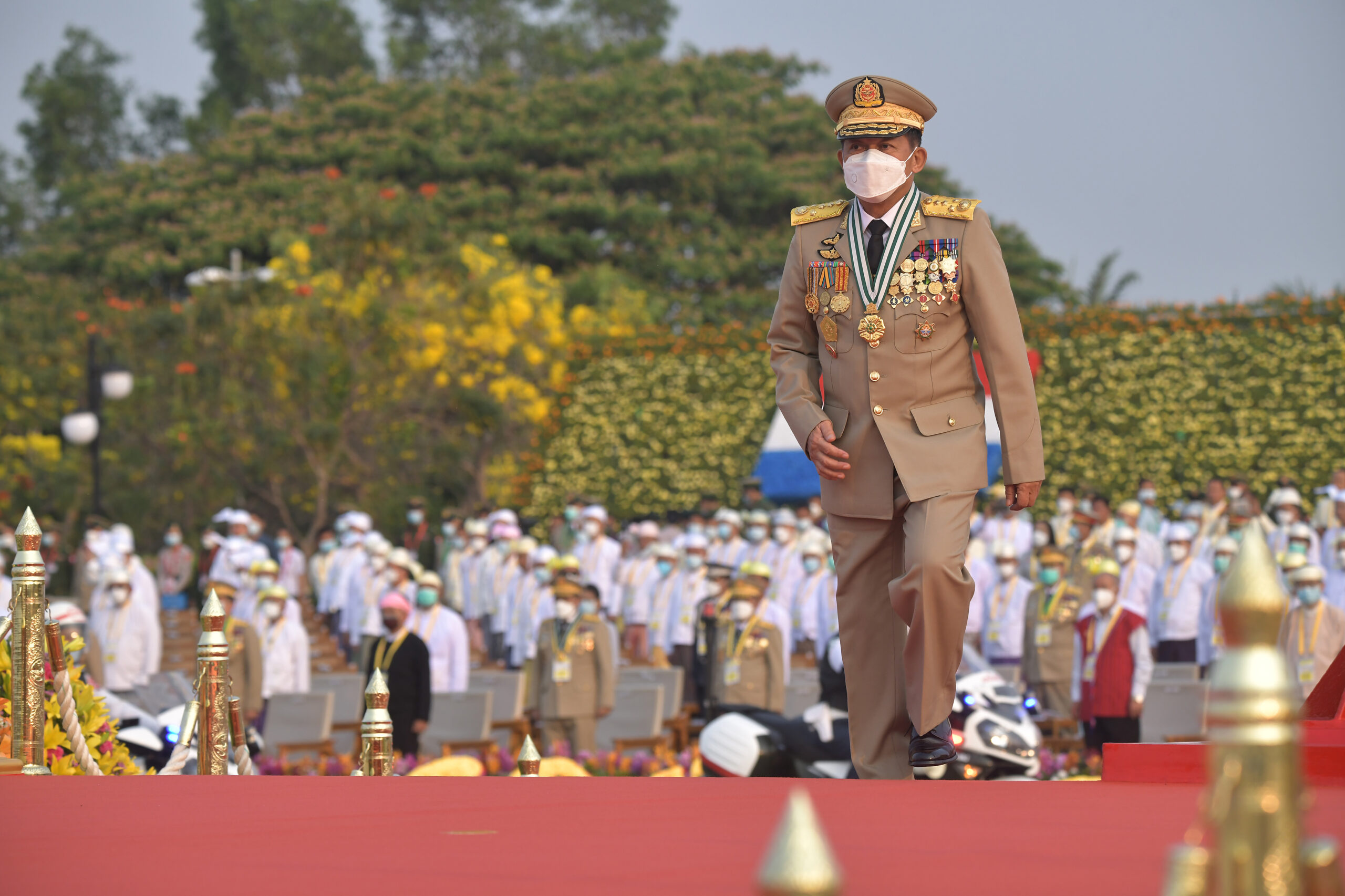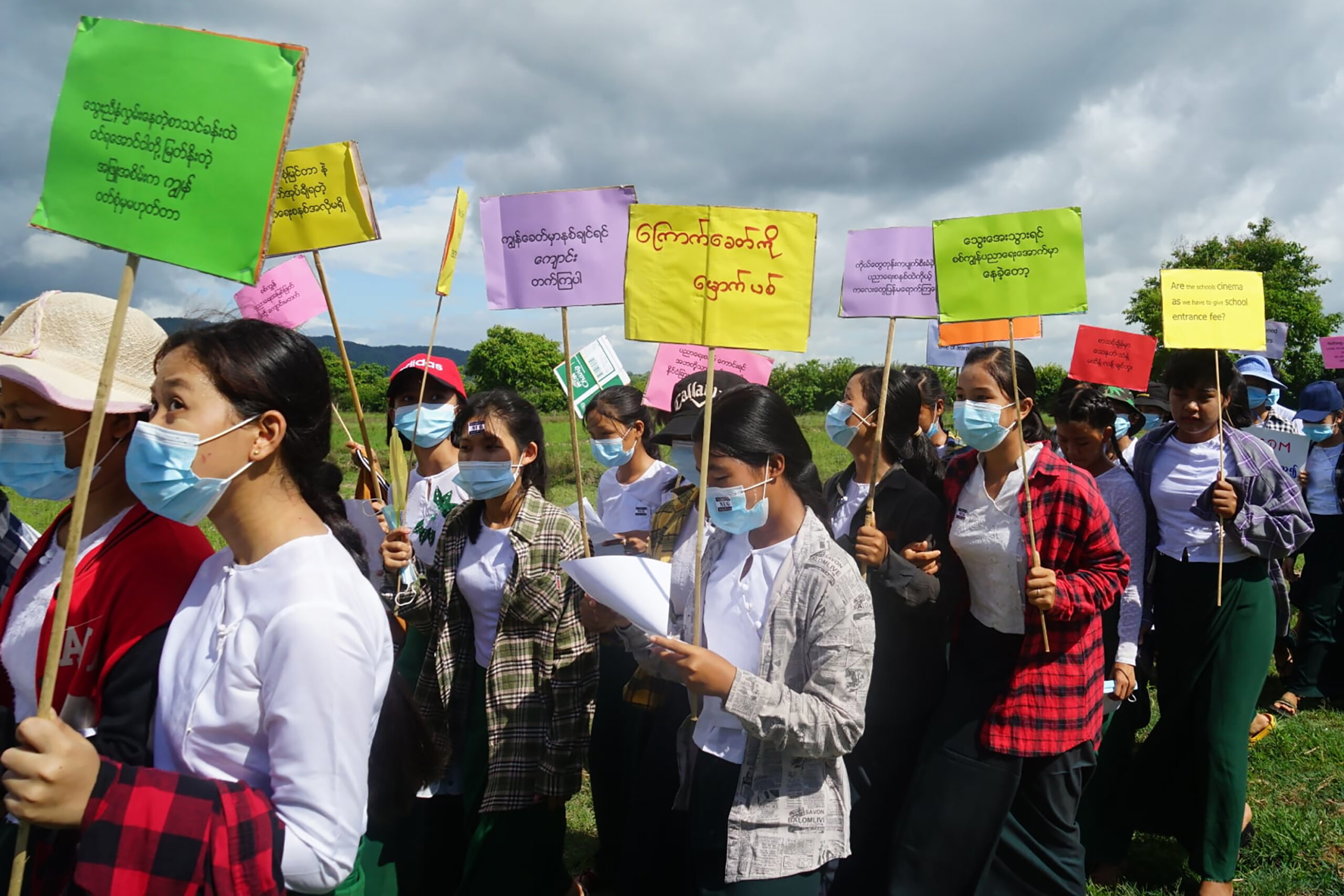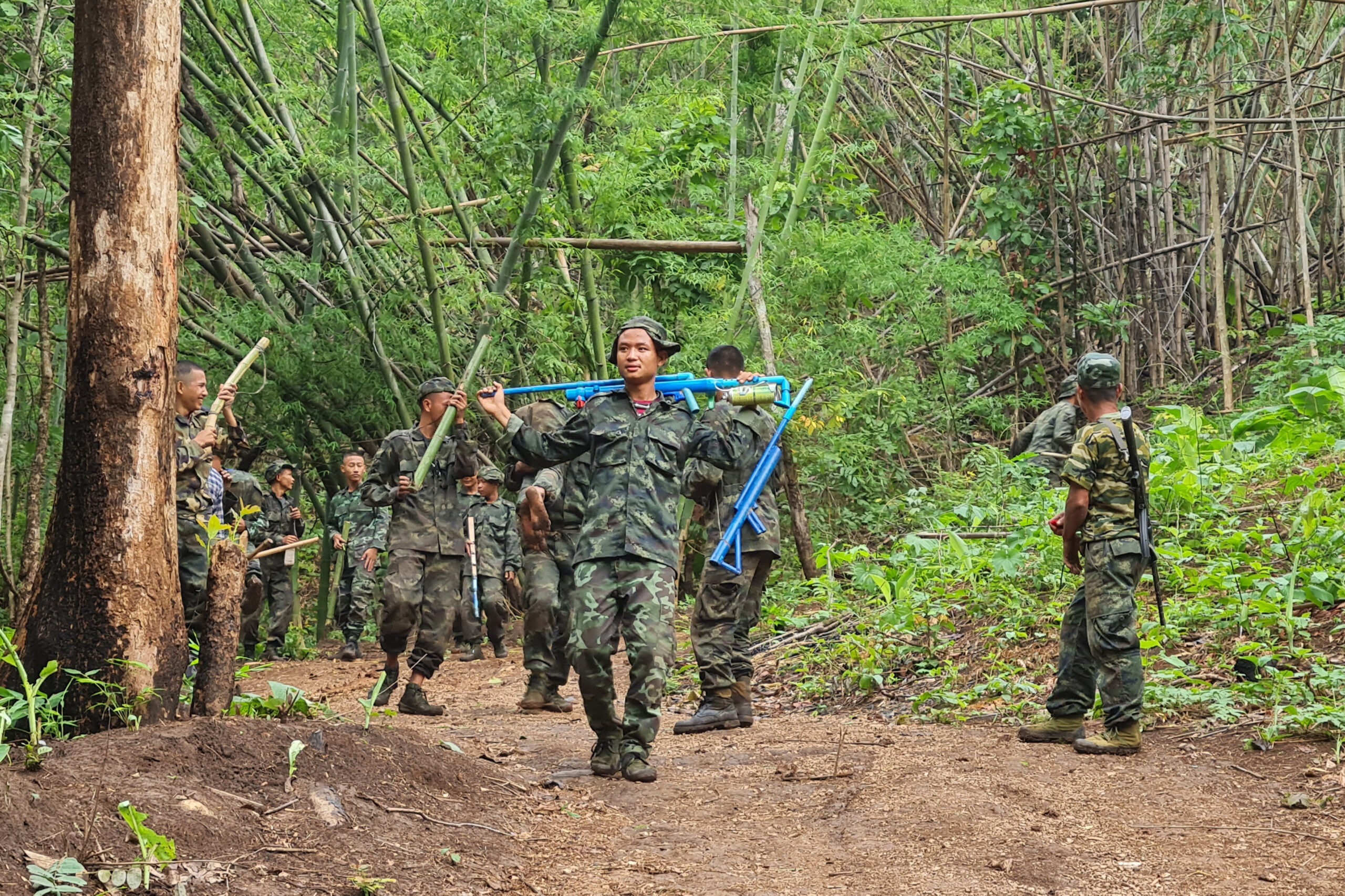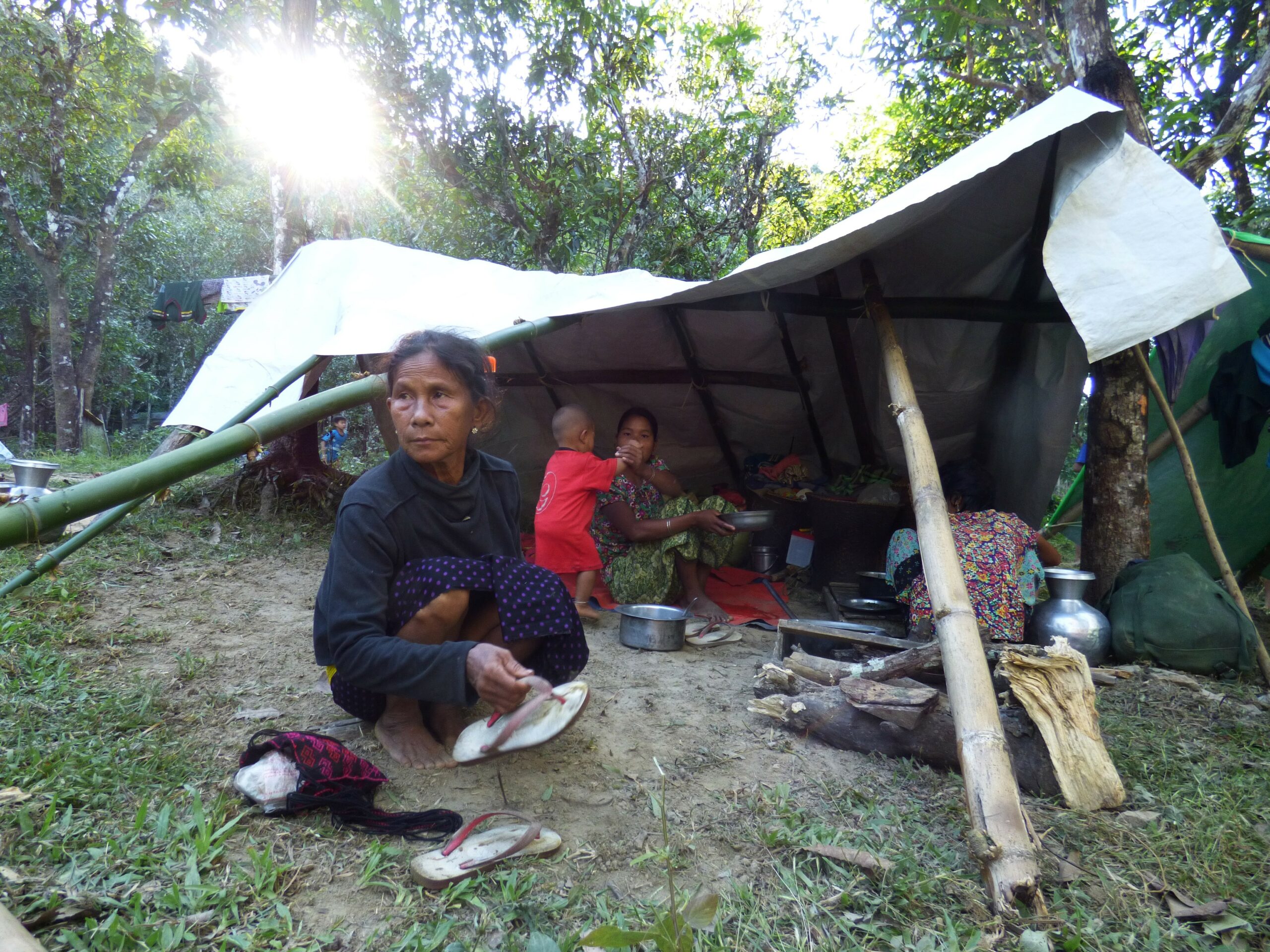The Myanmar military is paradoxically achieving one of its longest-standing objectives. By any means necessary, they are forming the creation of a state with a tangible national identity. But the ultimate success of this goal, however, will require the failure of the current regime’s more pressing objective, to remain in power.
To this end, the Myanmar military has demonstrated incredible determination and a willingness to inflict brutality. Many observers understandably assess the regime’s increasing use of air strikes and explicit targeting of civilians as signs of desperation due to depleted and demoralised ground forces.
The current violence comes in the wake of the coup on 1 February 2021 that deposed the recently elected government and ended over ten years of nominal civilian rule.
However, these actions also follow the long-standing four cuts doctrine the Myanmar military has employed elsewhere over many decades of internal conflicts. The essence of this strategy is to cut off access to food, money, potential recruits, and information within areas that oppose central government rule.
The four cuts doctrine is now being directly applied against ethnic Bamar population areas previously relied upon for recruitment and material support, which may signal the Myanmar military’s quasi-religious belief in its centrality to the nation more than desperation.
Indeed, even if the regime is desperate, Min Aung Hlaing, Myanmar’s Commander-In-Chief, and his coalition are likely willing to sacrifice everything to maintain privilege and power.

In response, the resulting civil war has mobilised citizens across class, ethnic, religious, and geographic divides toward the common goal of ending the regime. The current opposition towards the military is arguably the strongest unifying force in Myanmar’s recent history.
The Civil Disobedience Movement, which started as a general strike in protest of the coup, drew workers from across the country and various sectors of the economy. Even when met with lethal force, peaceful opposition to the regime has well outlived comparable attempts of the past. Simultaneously, violent opposition has also expanded beyond the long-established claims of Myanmar’s powerful Ethnic Armed Organisations (EAO) and into traditional military strongholds.
Majority ethnic Bamar areas, notably Magway and Sagaing, are now the sites of intense combat against loosely organised, and often poorly equipped, People’s Defense Forces (PDF), newly formed civilian armed resistance groups, as well as indiscriminate raids, killings, and the burning of civilian homes perpetrated by the regime.

The Myanmar military may not be as desperate as it is determined.
It now faces operational and strategic challenges that have only intensified. Last month saw the effective end of a tenuous ceasefire with the Arakan Army, which seeks autonomous rule in the western Rakhine State and is among the most powerful EAOs. The Myanmar military struggles to make operational gains against the Karen National Union (KNU) in the eastern Karen State bordering Thailand after months of clashes. The KNU is notably one of the oldest EAOs and has been resisting central government rule since shortly after Myanmar’s independence in 1948.
Growing cooperation of some EAOs with the National Unity Government (NUG), which is comprised primarily of members of the prior civilian government now in exile. Collaboration between NUG backed PDFs and well established EAOs signals potential for much greater operational capacity on the part of the opposition.
Most tellingly from a strategic perspective, the Myanmar military appears to be losing people faster than they can be replaced. Considering these challenges, the military’s response, no matter how brutal, are likely insufficient to reestablish the military’s previous widespread dominance.
But the alternative future to a central government victory against the opposition is not necessarily one where a popular, or at least less brutal regime comes to power. The Myanmar military is arguably in the process of becoming one – albeit the best armed – among many armed factions grappling for territory and resources.
Nevertheless, the continued survival of opposition across Myanmar’s societal boundaries of ethnicity and geography show the clearest opportunity yet for the emergence of a shared national identity. An identity that, should it survive, may prove to be a critical unifying force driving the nation and its people towards a more stable and prosperous future.

It is critical to consider how such a unifying theme even exists.
For most of Myanmar’s turbulent post-colonial history, it has been its ethnic minorities that have suffered the brunt of successive military regime attempts at consolidating power. This fact has often been easy to dismiss for those in the Bamar dominated heartland who are now suffering what those in Myanmar’s ethnic states have for decades experienced. There is understandable suspicion when it comes to how the NUG led opposition might act if it were to come to power. Growing cooperation suggests this suspicion is gradually being relieved, but there is still much mistrust still to be overcome.
The economic and social damage caused by the double disasters of Covid-19 and the 2021 coup sent millions into poverty and destroyed any future for most citizens. Rampant economic mismanagement in the wake of the coup has destroyed the financial system and made access to critical commodities, including medicines, scarce. Yet, even with daily privations, or perhaps because there is little left to lose, the opposition continues.
It remains easy to assume the current opposition likely won’t succeed, especially when considering the stances taken by regional powers such as China, India, and Thailand in support of the military regime. From a realist perspective in which each nation seeks first to secure its own position, those who continue to support the regime look first to their own interests, and likely back the side perceived as most likely to win.
However, the decision makers could be just as trapped by limited perspectives and narrow framing of facts on the ground as is Min Aung Hlaing and his inner circle. Alternatively, it is important to consider the full policy implications a realist view toward Myanmar might entail.
Myanmar is historically the source of many transnational problems for the region, ranging from human and narcotics trafficking to providing a safe harbour for separatist movements in conflict with neighbouring governments, especially India.
However, how might these threats emerging from instability and dysfunction, compare to a future threat of a more stable, developing, and increasingly powerful Myanmar?
As the largest country in mainland Southeast Asia, with 45% of its population under 25 and expansive natural resources including hydroelectric potential and fossil fuel reserves, Myanmar could very well become a major regional power.
A stable and developed Myanmar would raise economic prospects across the region. However, it would also threaten Thailand’s central economic position in mainland Southeast Asia.
Thailand continues to endure ongoing political turmoil that appears to share much in common with Min Aung Hlaing’s regime in terms of maintaining power at the expense of political and economic transformation. Keeping Myanmar undeveloped and a source of cheap labour and commodities is a tolerable status quo, even when air raids come dangerously close to provincial Thai citizens.
A more unified Myanmar may prove less amenable to the economic and security interests of India and China when these do not align with the popular will.
The expansive sanctions and efforts at humanitarian aid delivery made by the United States and others notwithstanding, international efforts continue to stop short of official recognition of the NUG. To be sure, doing so would pose significant diplomatic risk as it would end whatever engagement is possible with the current regime and upset the interests of key partners—especially Thailand.

The national identity taking shape in opposition to the regime demands consideration through both realist and idealistic lenses. From a humanitarian perspective, the growing toll of nearly 30,000 homes burned, thousands of civilians killed, and hundreds of thousands displaced is unconscionable. The crisis drains the credibility of ASEAN, while transnational threats of narcotics and arms trafficking are sure to intensify and undermine regional security.
Given the many challenges and a lack of action from abroad, the national identity of Myanmar is still uncertain.
But a ‘wait and see’ approach will keep Myanmar’s future opaque. The damage already done will not be reversed anytime soon. Yet the opportunity for outside powers to support a national identity, one which could lead to stability and prosperity, is unprecedented. Doing so will require openly backing the opposition against the current regime in recognition of a better future. Perhaps for the first time this appears not only possible, but with growing unity, increasingly expected.
Wayland Blue is a graduate student in the School of Global Policy and Strategy at UC San Diego focusing on development and security issues in Southeast Asia. He previously worked as the director of research and evaluation for Shade Tree Foundation, a Thailand-based NGO delivering aid and education to Myanmar migrant and refugee families.


